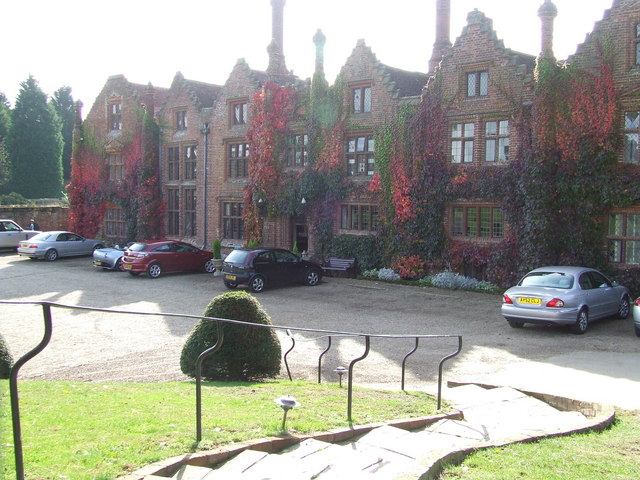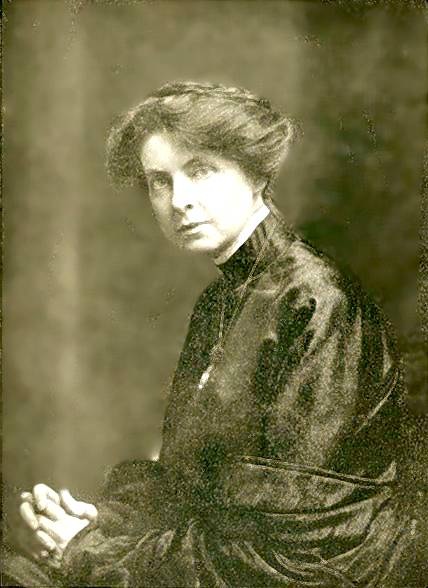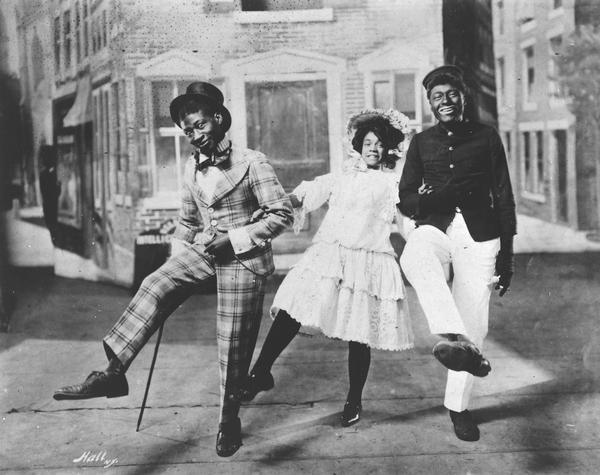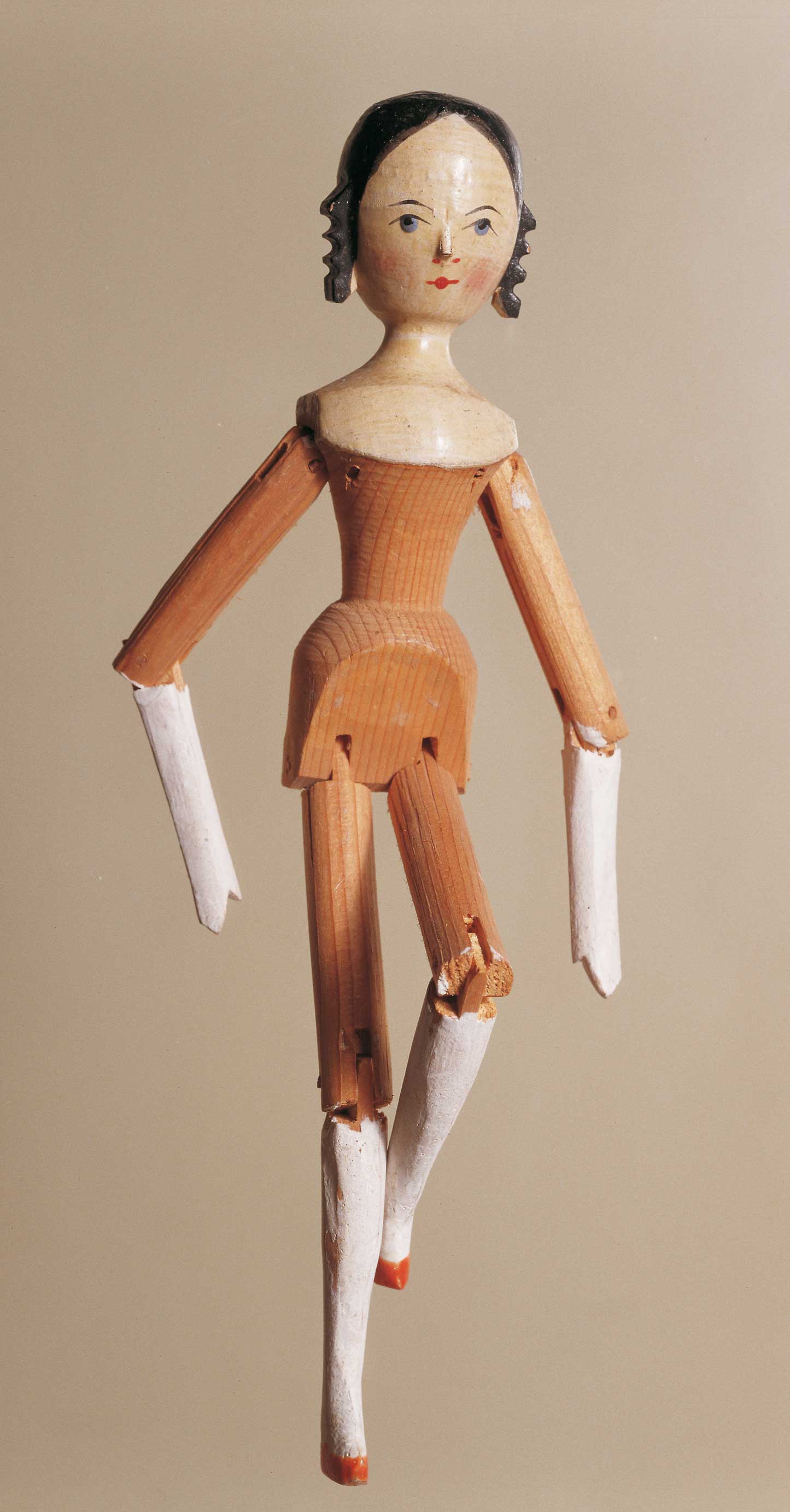|
Golliwogs
The golliwog, also spelled golliwogg or shortened to golly, is a doll-like character – created by cartoonist and author Florence Kate Upton – that appeared in children's books in the late 19th century, usually depicted as a type of rag doll. It was reproduced, both by commercial and hobby toy-makers, as a children's toy called the "golliwog", a portmanteau of ''golly'' and ''polliwog'', and had great popularity in the UK and Australia into the 1970s. The doll is characterised by jet black skin, eyes rimmed in white, exaggerated red lips and frizzy hair, a blackface minstrel tradition. Today the word is regarded as a racial slur towards black people. Though home-made golliwogs were sometimes female, the golliwog was generally male. For this reason, in the period following World War II, the golliwog was seen as a suitable soft toy for a young boy, akin to a teddy bear or a sock monkey. Golliwogs were collected throughout the Caribbean Islands. While some people see the ... [...More Info...] [...Related Items...] OR: [Wikipedia] [Google] [Baidu] |
Robertson's
Robertson's is a British brand of marmalades and fruit preserves that was founded by James Robertson in 1864. The firm was run as a partnership until 1903, when it was incorporated as a limited company - James Robertson & Sons, Preserve Manufacturers, Limited. It produces the "Golden Shred" marmalade, a recipe created in 1874 and registered as a trademark in 1886, among other products. Robertson's received their first Royal Warrant from King George V in 1933. History James Robertson of Paisley, Renfrewshire, Scotland was born on 16 January 1832 in Niddry Street, Paisley. He started life working in the local thread mills at the age of eight. During a long down turn in the silk trade, in 1847 Robertson's parents decided to apprentice him to a local grocer, Gibson & Craig, wine spirit and tea merchants at 107 High Street in Paisley. This redefined James' future. Only at this late stage did he learn to read and write: attending night classes at Seedhill School.Made in Scotland, Caro ... [...More Info...] [...Related Items...] OR: [Wikipedia] [Google] [Baidu] |
Enid Blyton
Enid Mary Blyton (11 August 1897 – 28 November 1968) was an English children's writer, whose books have been worldwide bestsellers since the 1930s, selling more than 600 million copies. Her books are still enormously popular and have been translated into 90 languages. As of June 2019, Blyton held 4th place for the most translated author. She wrote on a wide range of topics, including education, natural history, fantasy, mystery, and biblical narratives. She is best remembered today for her '' Noddy'', '' Famous Five'', '' Secret Seven'', the ''Five Find-Outers'', and ''Malory Towers'' books, although she also wrote many others including the '' St Clare's'', ''The Naughtiest Girl'' and ''The Faraway Tree'' series. Her first book, '' Child Whispers'', a 24-page collection of poems, was published in 1922. Following the commercial success of her early novels, such as '' Adventures of the Wishing-Chair'' (1937) and '' The Enchanted Wood'' (1939), Blyton went on to build a li ... [...More Info...] [...Related Items...] OR: [Wikipedia] [Google] [Baidu] |
Florence Kate Upton
Florence Kate Upton (22 February 1873 – 16 October 1922) was an American-born English cartoonist and author most famous for creating the Golliwog The golliwog, also spelled golliwogg or shortened to golly, is a doll-like character – created by cartoonist and author Florence Kate Upton – that appeared in children's books in the late 19th century, usually depicted as a type of rag ... character, featured in a series of children's books. Early life Upton was born in Flushing, New York, to British parents who had immigrated recently. She was the second of four children in a creative and slightly eccentric household. Florence's father, Thomas Harborough Upton, worked as a confidential clerk at the American Exchange Bank in New York. In 1884, the family moved from Flushing to central Manhattan, which was more convenient for her father's daily journey to his office. The National Academy of Design, located near the new home, offered free instruction to anyone who could q ... [...More Info...] [...Related Items...] OR: [Wikipedia] [Google] [Baidu] |
Agnetha Fältskog
Agneta Åse Fältskog (born 5 April 1950), known as Agnetha Fältskog (), is a Swedish singer, songwriter, and musician. She first achieved success in Sweden with the release of her 1968 self-titled debut album. She later achieved international stardom in the 1970s as a member of the pop group ABBA. The group has sold over 380 million albums and singles worldwide, making it one of the best-selling music acts in history. She is the youngest member of ABBA, and the only one born in the 1950s. After the unofficial break-up of ABBA in December 1982, Fältskog found renewed success later in the decade as a solo artist with three albums and a leading role in a movie. She became reclusive in the 1990s, avoiding outside publicity and residing on the Stockholm County island of Ekerö. Fältskog stopped recording music for 16 years until she released a new album, '' My Colouring Book'', in 2004. She returned in 2013 with '' A'', her highest UK charting solo album to date. ABBA sin ... [...More Info...] [...Related Items...] OR: [Wikipedia] [Google] [Baidu] |
Minstrel Show
The minstrel show, also called minstrelsy, was an American form of racist theatrical entertainment developed in the early 19th century. Each show consisted of comic skits, variety acts, dancing, and music performances that depicted people specifically of African descent. The shows were performed by mostly white people wearing blackface make-up for the purpose of playing the role of black people. There were also some African-American performers and black-only minstrel groups that formed and toured. Minstrel shows caricatured black people as dim-witted, lazy, buffoonish, superstitious, and happy-go-lucky.The Coon Character , Jim Crow Museum of Racist Memorabilia, Ferris State University. Retrieved 29 January 2016.John Kenrick [...More Info...] [...Related Items...] OR: [Wikipedia] [Google] [Baidu] |
Cakewalk
The cakewalk was a dance developed from the "prize walks" (dance contests with a cake awarded as the prize) held in the mid-19th century, generally at get-togethers on Black Slavery in the United States, slave plantations before and after End of slavery in the United States of America, emancipation in the Southern United States. Alternative names for the original form of the dance were "chalkline-walk", and the "walk-around". It was originally a processional partner dance danced with comical formality, and may have developed as a subtle mockery of the mannered dances of white slaveholders. Following an exhibition of the cakewalk at the 1876 Centennial Exposition in Philadelphia, the cakewalk was adopted by performers in minstrel shows, where it was danced exclusively by men until the 1890s. At that point, Broadway shows featuring women began to include cakewalks, and grotesque dances became very popular across the country.. The fluid and graceful steps of the dance may have g ... [...More Info...] [...Related Items...] OR: [Wikipedia] [Google] [Baidu] |
World War I
World War I (28 July 1914 11 November 1918), often abbreviated as WWI, was one of the deadliest global conflicts in history. Belligerents included much of Europe, the Russian Empire, the United States, and the Ottoman Empire, with fighting occurring throughout Europe, the Middle East, Africa, the Pacific, and parts of Asia. An estimated 9 million soldiers were killed in combat, plus another 23 million wounded, while 5 million civilians died as a result of military action, hunger, and disease. Millions more died in genocides within the Ottoman Empire and in the 1918 influenza pandemic, which was exacerbated by the movement of combatants during the war. Prior to 1914, the European great powers were divided between the Triple Entente (comprising France, Russia, and Britain) and the Triple Alliance (containing Germany, Austria-Hungary, and Italy). Tensions in the Balkans came to a head on 28 June 1914, following the assassination of Archduke Franz Ferdin ... [...More Info...] [...Related Items...] OR: [Wikipedia] [Google] [Baidu] |
Ashton-under-Lyne
Ashton-under-Lyne is a market town in Tameside, Greater Manchester, England. The population was 45,198 at the 2011 census. Historically in Lancashire, it is on the north bank of the River Tame, in the foothills of the Pennines, east of Manchester. Evidence of Stone Age, Bronze Age, and Viking activity has been discovered in Ashton-under-Lyne. The "Ashton" part of the town's name probably dates from the Anglo-Saxon period, and derives from Old English meaning "settlement by ash trees". The origin of the "under-Lyne" suffix is less clear; it possibly derives from the Brittonic-originating word ''lemo'' meaning elm or from Ashton's proximity to the Pennines. In the Middle Ages, Ashton-under-Lyne was a parish and township and Ashton Old Hall was held by the de Asshetons, lords of the manor. Granted a Royal Charter in 1414, the manor spanned a rural area consisting of marshland, moorland, and a number of villages and hamlets. Until the introduction of the cotton trade in 1769, Ash ... [...More Info...] [...Related Items...] OR: [Wikipedia] [Google] [Baidu] |
Gnome
A gnome is a mythological creature and diminutive spirit in Renaissance magic and alchemy, first introduced by Paracelsus in the 16th century and later adopted by more recent authors including those of modern fantasy literature. Its characteristics have been reinterpreted to suit the needs of various story tellers, but it is typically said to be a small humanoid that lives underground. Diminutive statues of gnomes introduced as lawn ornaments during the 19th century grew in popularity during the 20th century and came to be known as garden gnomes. History Origins The word comes from Renaissance Latin ''gnomus'', which first appears in ''A Book on Nymphs, Sylphs, Pygmies, and Salamanders, and on the Other Spirits'' by Paracelsus, published posthumously in Nysa in 1566 (and again in the Johannes Huser edition of 1589–1591 from an autograph by Paracelsus). The term may be an original invention of Paracelsus, possibly deriving the term from Latin ''gēnomos'' (itself represen ... [...More Info...] [...Related Items...] OR: [Wikipedia] [Google] [Baidu] |
Dutch Doll
Peg wooden dolls, also known as Dutch dolls (), are a type of wooden doll from Germany. They originated as simple lathe-turned dolls from the Val Gardena in the Alps. The name Pennywoods is also used for dolls of this type, in particular those made in the United States. These dolls were sold undressed. Children would then make their clothing from scraps of fabric. Other similarly-constructed wooden dolls, using a jointing technique where the arms and/or legs are attached to the body with pegs, are some of the oldest surviving dolls, and were made worldwide. Sometimes a peg wooden doll's arms or legs are locked together by the jointing system, so if one arm is moved the other will move. An advanced form of peg joints is where the body pegs are "split" and attached separately allowing independent movement. ''Tuck comb dolls'' are a special style of peg wooden doll, named for their carved hair comb. The head and body are turned as one piece. The hair is usually painted with curled fr ... [...More Info...] [...Related Items...] OR: [Wikipedia] [Google] [Baidu] |
Flushing, Queens
Flushing is a neighborhood in the north-central portion of the New York City borough of Queens. The neighborhood is the fourth-largest central business district in New York City. Downtown Flushing is a major commercial and retail area, and the intersection of Main Street and Roosevelt Avenue at its core is the third-busiest in New York City, behind Times Square and Herald Square. Flushing was established as a settlement of New Netherland on October 10, 1645, on the eastern bank of Flushing Creek. It was named Vlissingen, after the Dutch city of Vlissingen. The English took control of New Amsterdam in 1664, and when Queens County was established in 1683, the "Town of Flushing" was one of the original five towns of Queens. In 1898, Flushing was consolidated into the City of New York. Development came in the early 20th century with the construction of bridges and public transportation. An immigrant population, composed mostly of Chinese and Koreans, settled in Flushing in the late ... [...More Info...] [...Related Items...] OR: [Wikipedia] [Google] [Baidu] |










